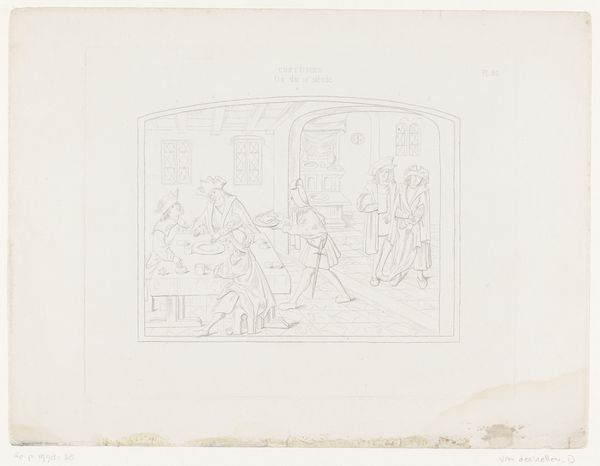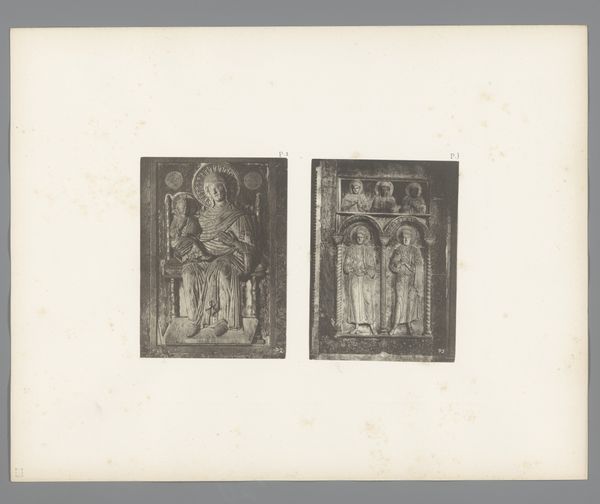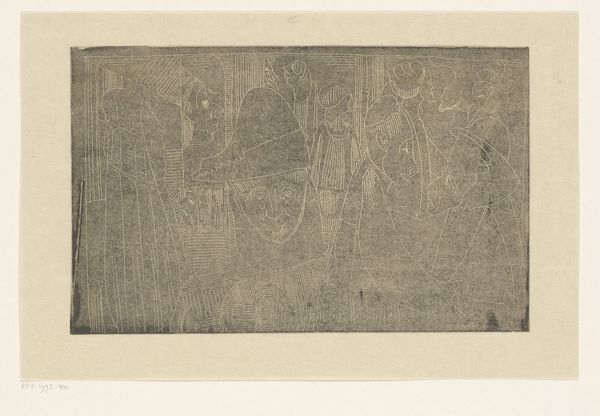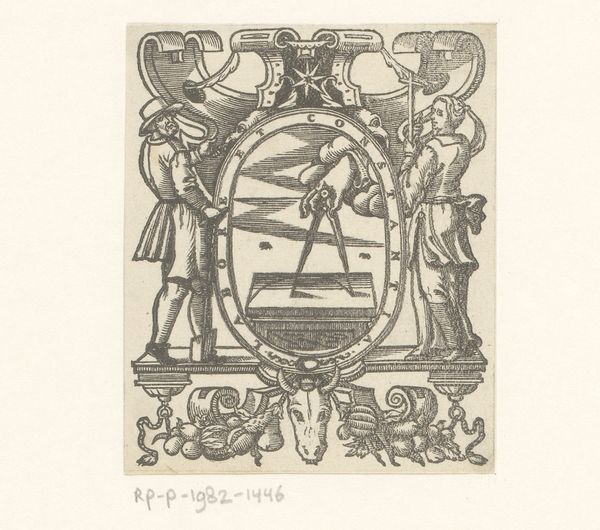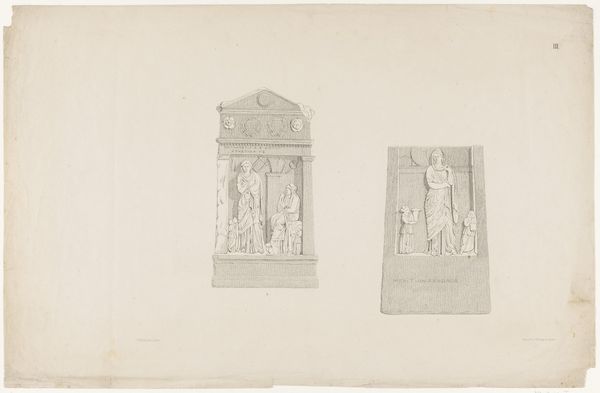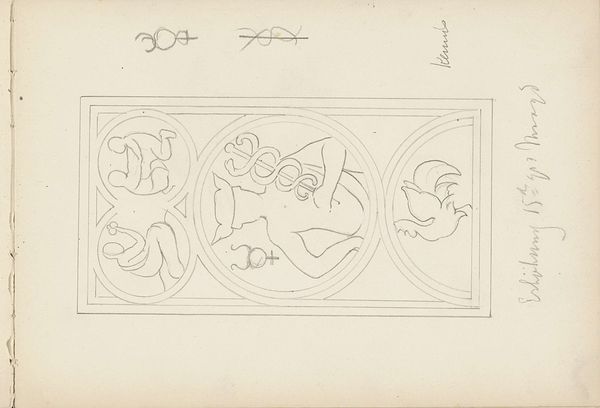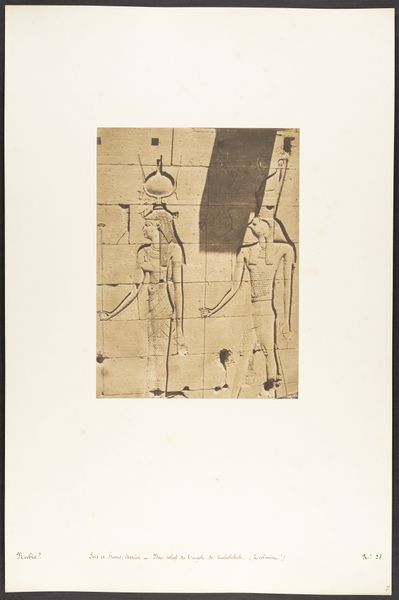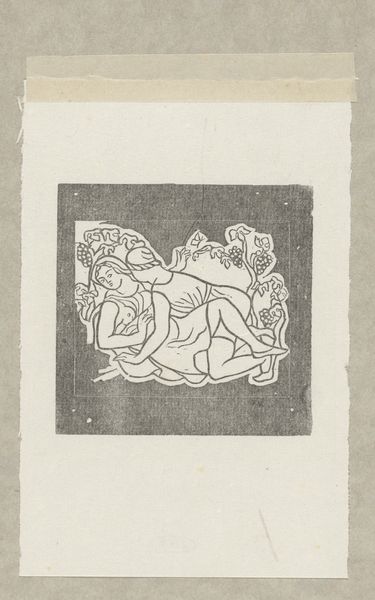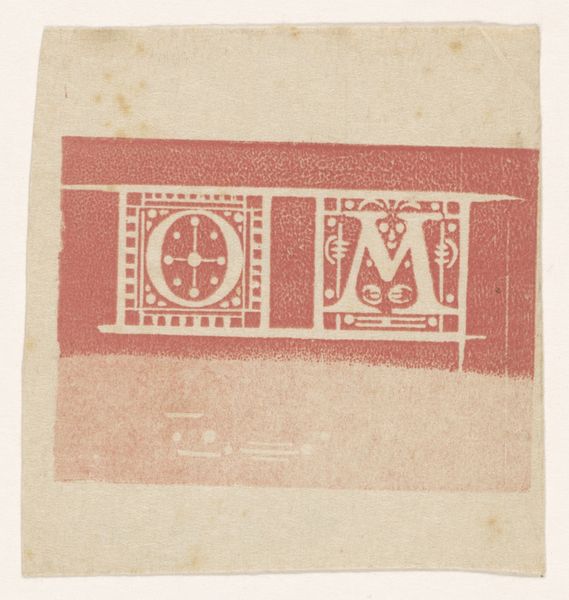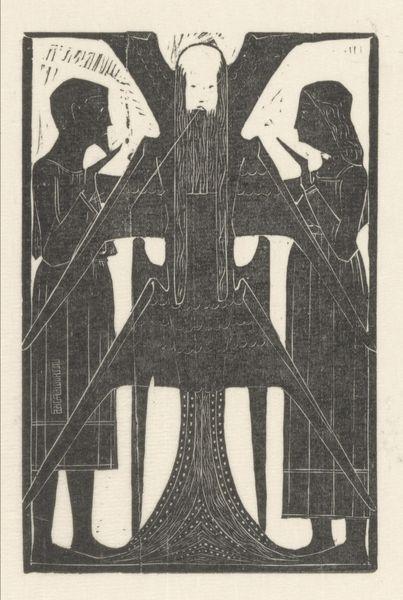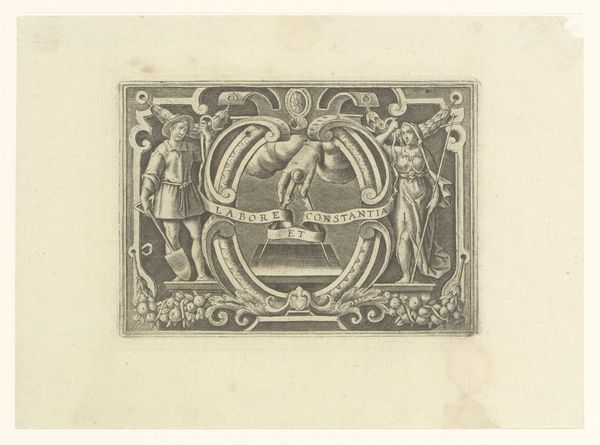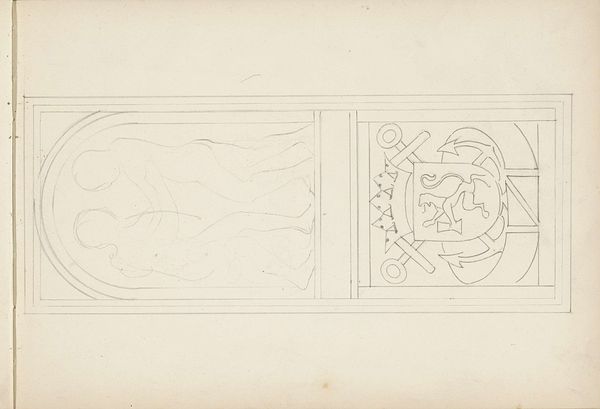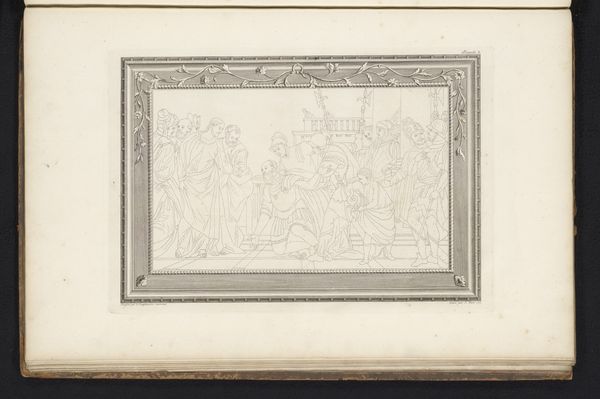
Ontwerp voor vignet in het gedenkboek voor koningin Wilhelmina uit 1923 met voorstelling van de deugden Geloof, Hoop en Liefde 1874 - 1945
0:00
0:00
graphic-art, print, linocut, textile
#
graphic-art
#
art-nouveau
# print
#
linocut
#
textile
#
figuration
#
linocut print
#
symbolism
#
history-painting
Dimensions: height 88 mm, width 424 mm
Copyright: Rijks Museum: Open Domain
Curator: The stark black and white is arresting. There’s a somberness to it. Editor: Indeed. This is Carel Adolph Lion Cachet’s “Ontwerp voor vignet in het gedenkboek voor koningin Wilhelmina uit 1923 met voorstelling van de deugden Geloof, Hoop en Liefde”, a design for a vignette in Queen Wilhelmina's memorial book from 1923, depicting the virtues Faith, Hope, and Love. Curator: It feels rooted in its time. You can see Art Nouveau sensibilities mixed with something... darker. Those small, almost childlike figures, clutching symbols... scrolls and what looks like an anchor. It has a definite symbolic weight. Editor: The materials are significant here. As a linocut print, most likely intended for textile application, this work sits interestingly between the realms of fine art and the industrial. How was it made and for whom? The Queen. To create a memento through a relatively accessible medium. The materiality speaks volumes about social positioning, doesn’t it? Curator: Absolutely. Consider Queen Wilhelmina's legacy in the Netherlands – she became a symbol of Dutch resistance during World War II. In that light, the figures embody more than simple virtues; they are guardians of national identity and moral strength in a time of intense political and social change. This was designed to underscore a complex narrative woven between national duty and personal integrity. Editor: The decision to use linocut, a technique often associated with more democratic modes of production, seems a conscious effort to connect with a broader audience and disseminate ideals of resilience. It also reminds us of the social context of the 1920s and post-World War One era with all of its artistic expressions linked with manual work in graphic design as linocut certainly evokes, to transmit meaning using modern tools. Curator: Well, exploring this linocut together, in this manner, certainly enriches the viewing experience, making its social impact quite apparent. Editor: Indeed. The blend of accessibility and symbolism definitely lends a nuanced perspective to both its time and craft.
Comments
No comments
Be the first to comment and join the conversation on the ultimate creative platform.
